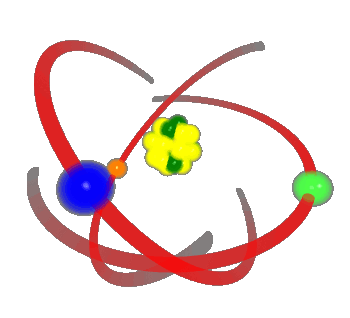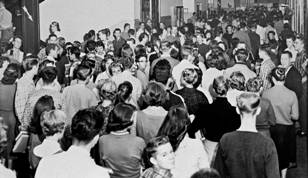
Electricity
Electricity, What is it?
Electricity, What is It?
A Very Different Explanation !


At the bottom of the molecular structure are atoms, atoms make up everything we know including ourselves. A atom consists of a nucleus with protons and neutrons, around that in orbits that circle around the nucleus are electrons. The numbers of protons / neutrons in the nucleus as well as electrons in rings / orbits vary depending on what kind of element / material it is.
Neutron – No Charge
Proton – Positive Charge
Electron – Negative Charge
Certain materials are made up of atoms that have what is known as Valence electrons in the outer most orbit and as such can easily (with some force) be dislodged into the next atom which in turn can do the same, these materials are considered good conductors to the flow of electricity.
Certain other materials do not have Valence electrons and the atomic structure is so tightly bound that dislodging an electron into the next atom is not possible, these materials are therefore considered good insulators from the flow of electricity.
Valence meaning electrons not tightly bound and can be kicked out of there orbit.
Scientists in Sweden film moving electron for the first time

Electricity is the movement of electrons from one atom to another along a conducting pathway.
Terminology
Volts – The speed in which the electron movement is occurring / force (Electromotive force [emf]) applied to kick the atoms butt to get the electrons moving.
Amps – The volume (number) of electrons being moved.
Resistance – Sometimes the Enemy – trying to restrict the movement of electrons.
Watts – Power consumption which is Amps x Volts, basically measuring the amount of electrons needed in a certain time period. For example…
a) A 240 volts [electron movement speed] times 10 amps [the volume (number) of electrons being moved]
b) A 120 volts [electron movement speed] times 20 amps [the volume (number) of electrons being moved]
These will both compute to the same number of Watts because it is the same number of electrons are passing a specific spot in a given time period.
Conductor wires why they must be a certain thickness….


Imagine walking or running down a hallway. Imagine you are alone or with only very few people.
Hardly any one in your way and the task of getting to the other end extremely easy right?
Now substitute that hallway with a conductor wire carrying the movement of electrons down it. Considering not much volume, no problem right?


Now consider yourself walking or running down a hallway of the same width crowded with large volume of people, not as easy right? You are rubbing on each other brushing the walls not such a easy task as when the volume was small.
Now imagine the large volume of electrons moving down a conductor wire. Just like there was a resistance to the movement of crowded people in a hallway that is too narrow and not meant to move that many people quickly, there is resistance when trying to move a large volume of electrons with a wire that is too small, resistance is like friction and friction creates heat which causes fires.
To reduce the strain with electrical conductors you need to increase the size of the wire in order to reduce the resistance – giving move wire space for the volume of electrons required to be moved in a certain time period.
Now for electrons to move they must move somewhere and the rings around an atom can only hold so many electrons. So for a atom that dislodges it outer ring electron into the next atom, that next atom in turn must dislodge its outer ring electron into the next atom. But what happens when it runs out of conducting atoms? Well the movement of electrons has to stop because it has run out of places to go. In order for the movement of electrons to continue it must have a return path to origin rather that be through earth ground or by wire the very first atom that had its outer ring atom dislodged must have it replaced with another electron.
Just like a water hose that has pressure applied with water ready to escape when a opening appears in the hose. While pressure (force) exists in a wire it is instantly ready to push the movement of electrons as soon a return connection pathway is made.
Volts is like the amount of pressure or force being applied resulting in the speed of the electrons being moved.
How that force (power generation) happens and how it connected to your home is covered in the article called ‘Generation / Distribution Grid‘
WHILE EXTREME CARE HAS BEEN IMPLEMENTED IN THE PREPARATION OF THIS SELF-HELP DOCUMENT, THE AUTHOR AND/OR PROVIDERS OF THIS DOCUMENT ASSUMES NO RESPONSIBILITY FOR ERRORS OR OMISSIONS, NOR IS ANY LIABILITY ASSUMED FROM THE USE OF THE INFORMATION, CONTAINED IN THIS DOCUMENT, BY THE AUTHOR and / OR PROVIDER.
By: Donald Kerr